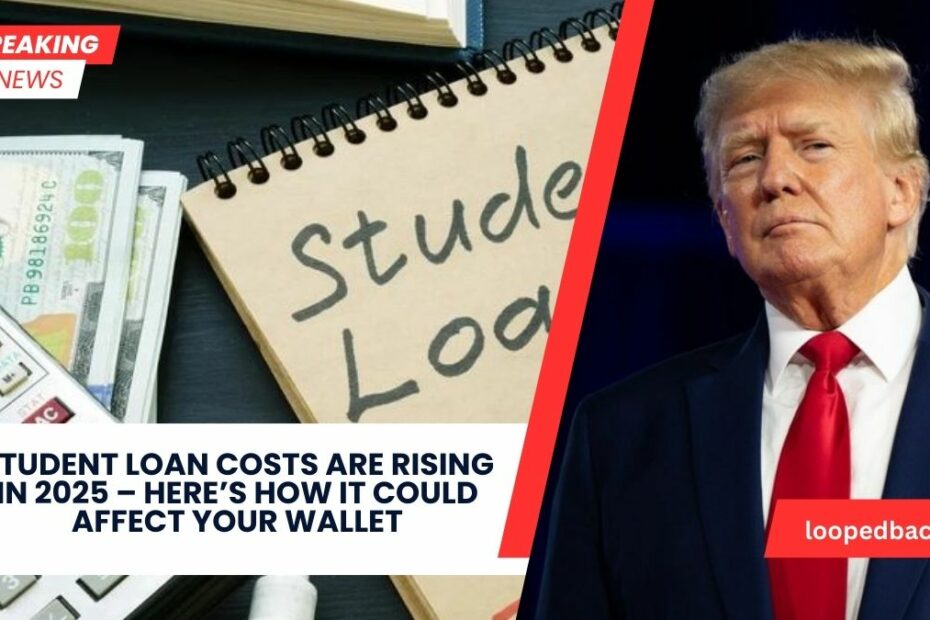Many students in the USA borrow money to pay for college, using what’s called a student loan. But starting in 2025, these loans might get a lot more expensive.
New rules being discussed by lawmakers could make monthly payments higher, especially for people using plans that are based on how much money they make.
In this article, we’ll break down what’s changing, how it might affect you or your family, and what you can do to prepare.
Why Are Student Loan Costs Rising in 2025?
In 2025, millions of Americans might see their student loan payments go up. This is because lawmakers, especially in the House of Representatives, are trying to cut government spending. One way they plan to do this is by changing or removing programs that help students repay their loans.
These changes could cause many borrowers to pay around $200 more every month. Over time, this could mean thousands of extra dollars in payments.
Major Changes You Need to Know About
1. Possible End of the SAVE Repayment Plan
The SAVE Plan was made to help people with lower incomes. It lets borrowers pay less each month, based on how much money they earn. Some people even had payments as low as $0.
Now, this plan is under legal pressure, and lawmakers want to end it completely. If that happens:
- Borrowers will have to switch to other repayment plans.
- These other plans usually cost more each month.
- It could add thousands of dollars in payments over time.
2. Fewer Income-Driven Repayment (IDR) Plans
Right now, borrowers can choose from several income-driven plans. These plans help keep monthly payments low based on your income. However, lawmakers want to cut the number of these plans down to just two.
This means:
- Less flexibility for borrowers.
- People might end up in plans that don’t fit their financial situation.
- The government could save $127.3 billion in 10 years, but it puts more pressure on borrowers.
3. Tighter Rules for Public Service Loan Forgiveness (PSLF)
The PSLF Program helps people who work in jobs like teaching, healthcare, or law enforcement. After 10 years of payments, the rest of their loan could be forgiven.
The new plan might:
- Make it harder to qualify.
- Limit who can apply.
- Leave more public service workers with unpaid debt.
4. Lower Limits on How Much Students Can Borrow
Another rule change could reduce how much students can borrow from the federal government.
This could lead to:
- Students needing private loans, which often have higher interest rates.
- More pressure on low- and middle-income families.
- A harder time affording college without big debt.
Why Is This Happening?
The main reason is government budget cuts. The Republican-led House wants to reduce spending by $2 trillion, and student loan programs are on the chopping block.
Also, some leaders believe the loan relief programs started by President Biden were not approved by Congress and should go through a legal process.
In the past, President Biden tried to forgive up to $20,000 in student loans per person, but the Supreme Court stopped it.
Now, Congress is trying to go back to older systems and limit the help students can get.
What Can You Do to Prepare?
Even if you can’t control the changes, there are things you can do to be ready.
1. Keep Track of Your Loan Details
- Visit studentaid.gov often.
- Save screenshots of your payment history.
- Make sure your records are correct, especially if you’re in PSLF or an IDR plan.
2. Look at Other Repayment Options
- Check if you still qualify for your current plan.
- Think about switching plans if your situation changes.
- If you can, make extra payments to reduce future debt.
3. Speak Up and Stay Informed
- Contact your local lawmakers to share your opinion.
- Join groups that support student loan relief.
- Follow news updates about student loans so you’re not caught off guard.
Conclusion
Student loans are a big part of life for many students and families. But in 2025, things could get a lot harder. With the possible end of the SAVE Plan, fewer repayment options, and stricter rules, monthly payments might increase by hundreds of dollars. These changes are part of larger budget cuts, but they’ll hit borrowers the hardest.
If you’re a borrower or planning to go to college soon, now is the time to prepare. Keep track of your loan info, explore other repayment options, and stay informed. Student loans may not go away, but smart planning can help you manage them better.
Frequently Asked Questions (FAQs)
Why are student loan payments going up in 2025?
Student loan payments are expected to go up because lawmakers want to cut government spending. One way they plan to do that is by ending or changing programs that currently help borrowers pay less based on their income.
What is the SAVE plan and why is it important?
The SAVE plan is a repayment option that helps lower monthly payments based on how much money a borrower makes. It’s especially helpful for people with low incomes.
How much more will I have to pay each month?
If the changes happen, the average borrower could end up paying about $200 more every month. This depends on your current plan and how much you borrowed.
Must Visit:- Looped Back
